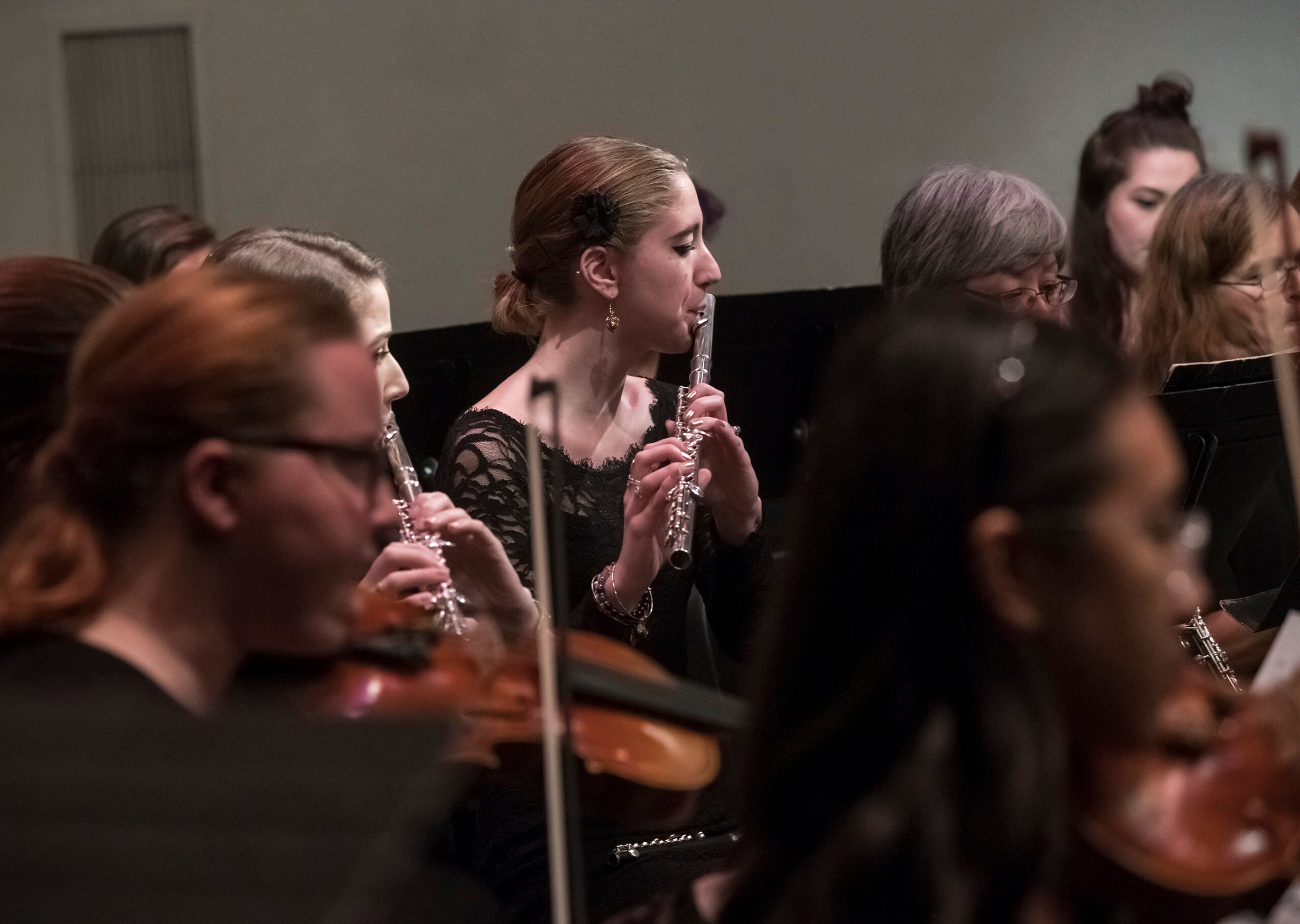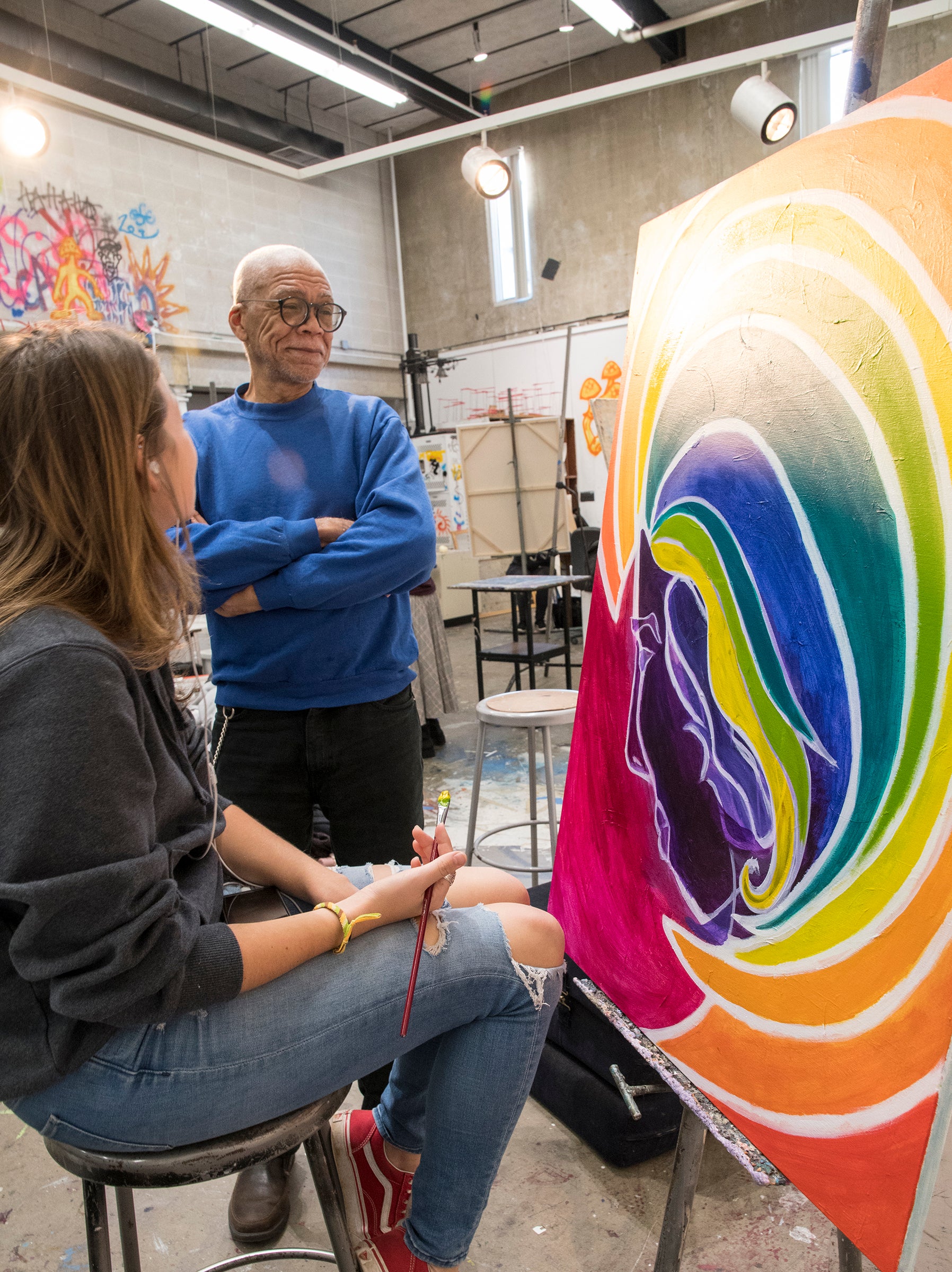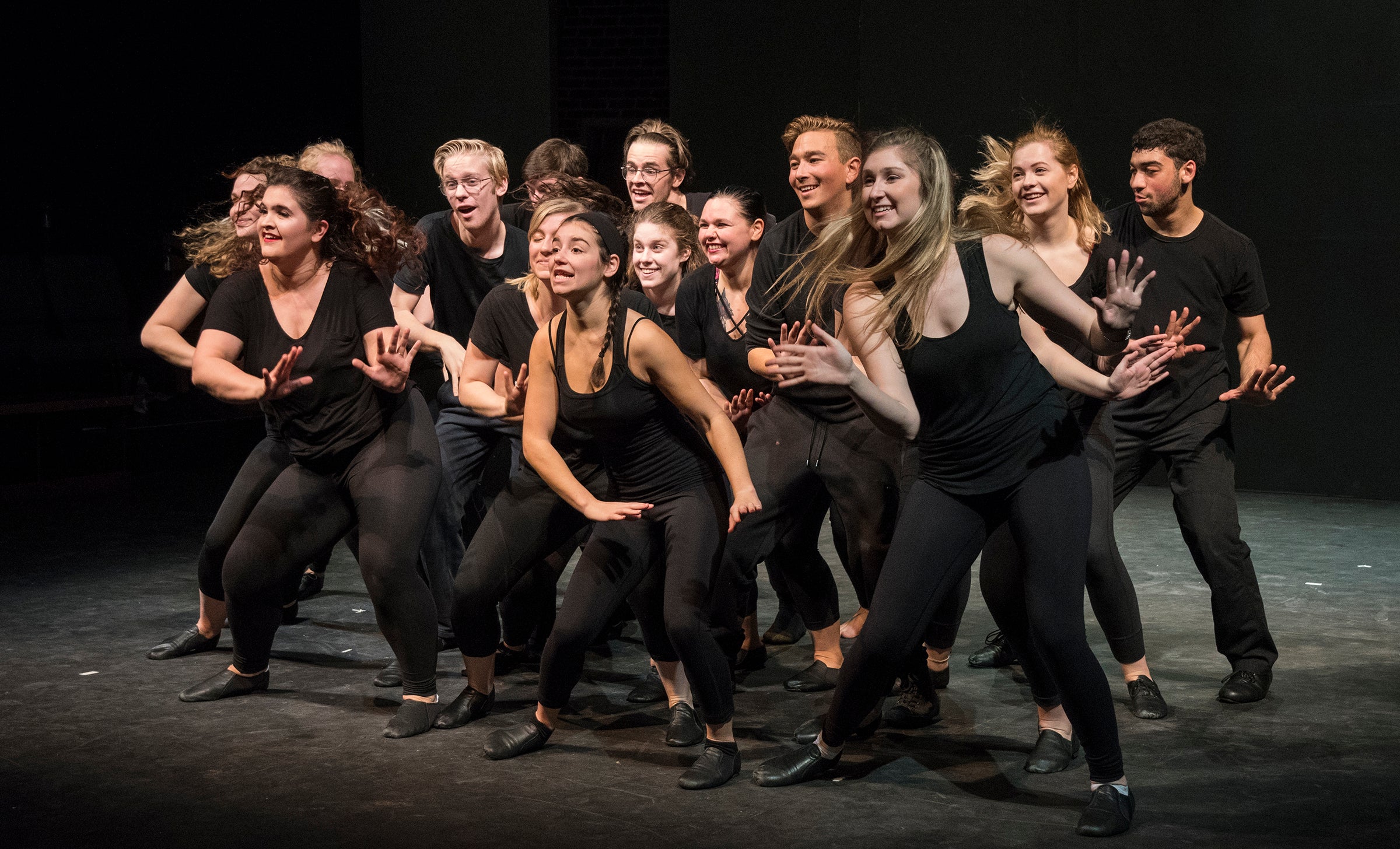KINGSTON, R.I. – Feb. 16, 2021 – David Howard remembers an interview he read a few years back. The speaker thought the University of Rhode Island’s well-worn, 50-year-old Fine Arts Center was vacant.
“Our building is anything but!” says Howard, chair of the Theatre Department. “The theatre, art and music departments are making glorious things every day, reaching hundreds of students and patrons through our programming. It may be a secret in South County, but new facilities may remind the state that there are vibrant and exciting things happening in these walls.”
On March 2, voters across the state get a chance to make that happen. The Fine Arts Center will be on the ballot as bond referendum #1, which would provide $107.3 million for major renovation projects at the state’s three public colleges. A total of $57.3 million would go to continuing vital upgrades to URI’s Fine Arts Center.

A distinctively squat-looking building, the Fine Arts Center, designed in the blocky, monolithic Brutalist style, opened in 1968, and is home to URI’s theatre, music and art departments, which serve more than 5,000 students each year. Over the years, the building has seen little change, other than a conversion to gas heat and the installation of a fire protection system. Built above a swamp, there have been constant water issues – flooding, chronic leaks, mold – over the years.
Mark Conley, chair of the Music Department, recalls a hallway that would flood in heavy rain, forcing the department to bridge the puddle with planks so students wouldn’t get their feet wet. Inevitably, students would float a rubber duck in the puddle. Conley also remembers leaks that required other quick thinking.
“We’ve had concerts where we’ve had buckets in between players in a string quartet,” he says.
The design of the building, dark and separated into 10 pods, also has provided inadequate spaces for studio art or art history, says Ronald Onorato, chair of the Department of Art and Art History.

“The center really needs some love and attention,” says Katherine Kittredge, associate director of campus design in the Planning and Real Estate Development Office.
In the last three years, renovations have started to provide that attention. Drainage has been improved, fixing the problems with flooding, leaks and mold. Some exterior walls have received brick façades, and roofs, heating, ventilation and air conditioning systems have been upgraded.
The proposed project would call for tearing down five of the center’s 10 pods and constructing an 82,000-square-foot academic building to house the music and art departments. Work would be scheduled to start in summer 2022 and take about two years, creating an estimated 647 construction industry-related jobs.
The new building would include a new lobby in front of the Robert E. Will Theatre, the department’s largest stage; improved access to J-Studio, the smaller black box theater; updated restrooms to serve the large number of patrons who attend theater productions; and two new modern acting classrooms.
For the Art and Art History Department, it would mean updated studios and classrooms with improved lighting, and new technical areas for digital art, graphic design, and a range of photographic and video-related media.
“They have become a major part of our curriculum over the past 25 years,” Onorato says.
Music would see major changes – new classrooms, practice rooms, faculty studios, recording studios, and a suite for the new music therapy program, in which clients could receive music therapy as students in the program observe, similar to a clinical setting, Conley says.
While many alumni in music, theater and art have advanced to the top of their fields, many more have settled or stayed in Rhode Island. Alumni take on positions, many as leaders, in cultural institutions around the state; as teachers in local public schools and colleges; or as performers and artists.
“Notably, a number of our students have started their own design and graphic design firms,” says Onorato. “They also work professionally as photographers, artist studio assistants, videographers, or independent visual artists.”
Before that, they got their start at the Fine Arts Center, which hosts scores of attractions each year, including five mainstage plays, more than 100 concerts, eight main gallery shows and smaller exhibits – that bring more than 50,000 visitors to the Kingston Campus.
“These new spaces will welcome guests and students into a new era of the arts and will continue our reputation for exceptional arts education,” says Howard. “In a sense, I think the new building will reflect the beauty and vibrancy of the art that is happening inside in a way the old building never has.”
But the importance of the arts also goes far beyond the play or concert or exhibit, Conley says.
“I think one of the important lessons for people to understand is that we’re not just teaching music as an art, which is enough,” he says. “We are also teaching resiliency, creativity, improvisation. When the pandemic hit, we came up with all kinds of solutions to allow ourselves to continue to make music. When we face obstacles, we figure out ways around them. I think that’s a part of arts education that can easily be missed. People think it’s only about the subject matter. It’s also about a mindset.”

